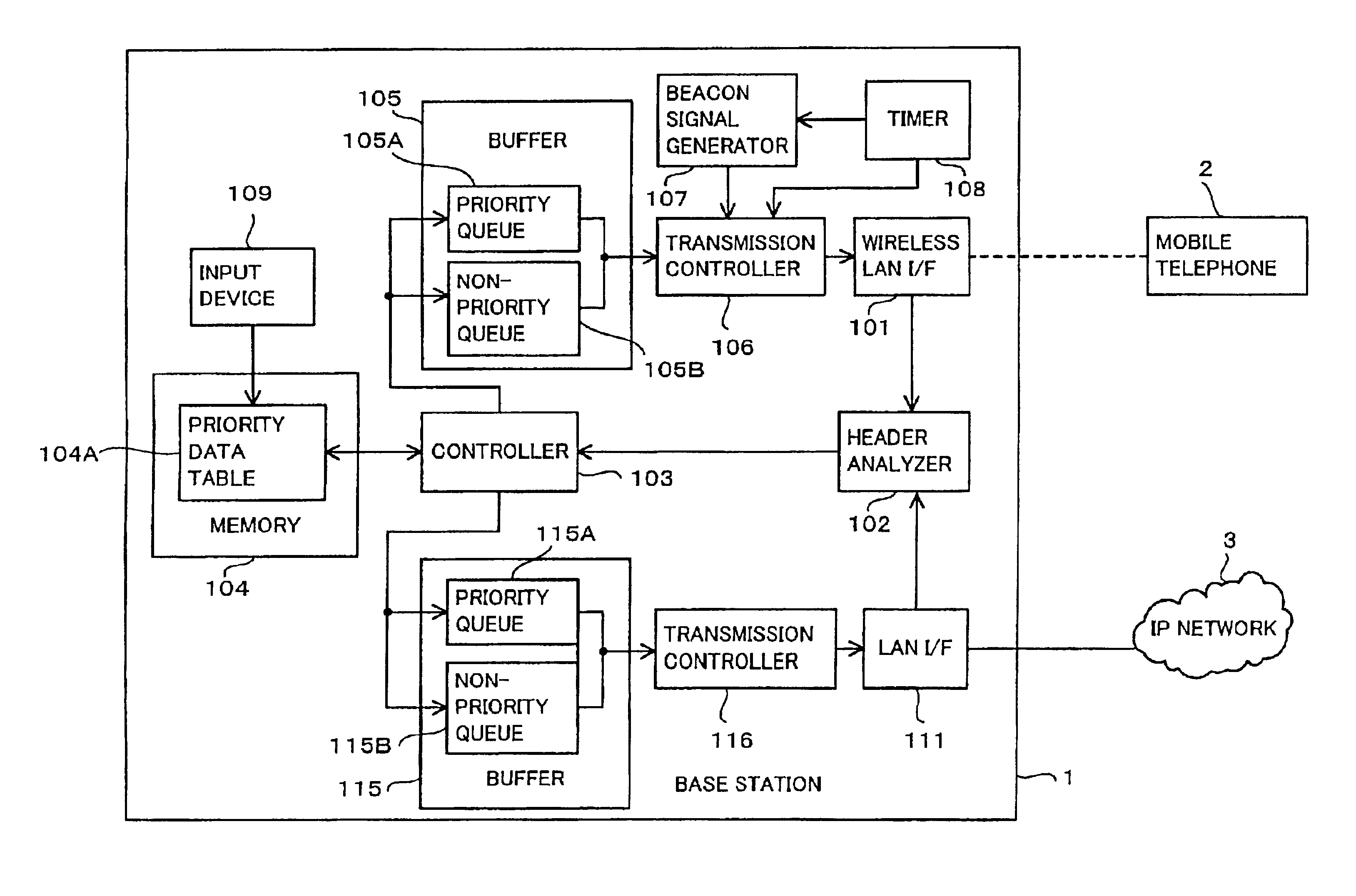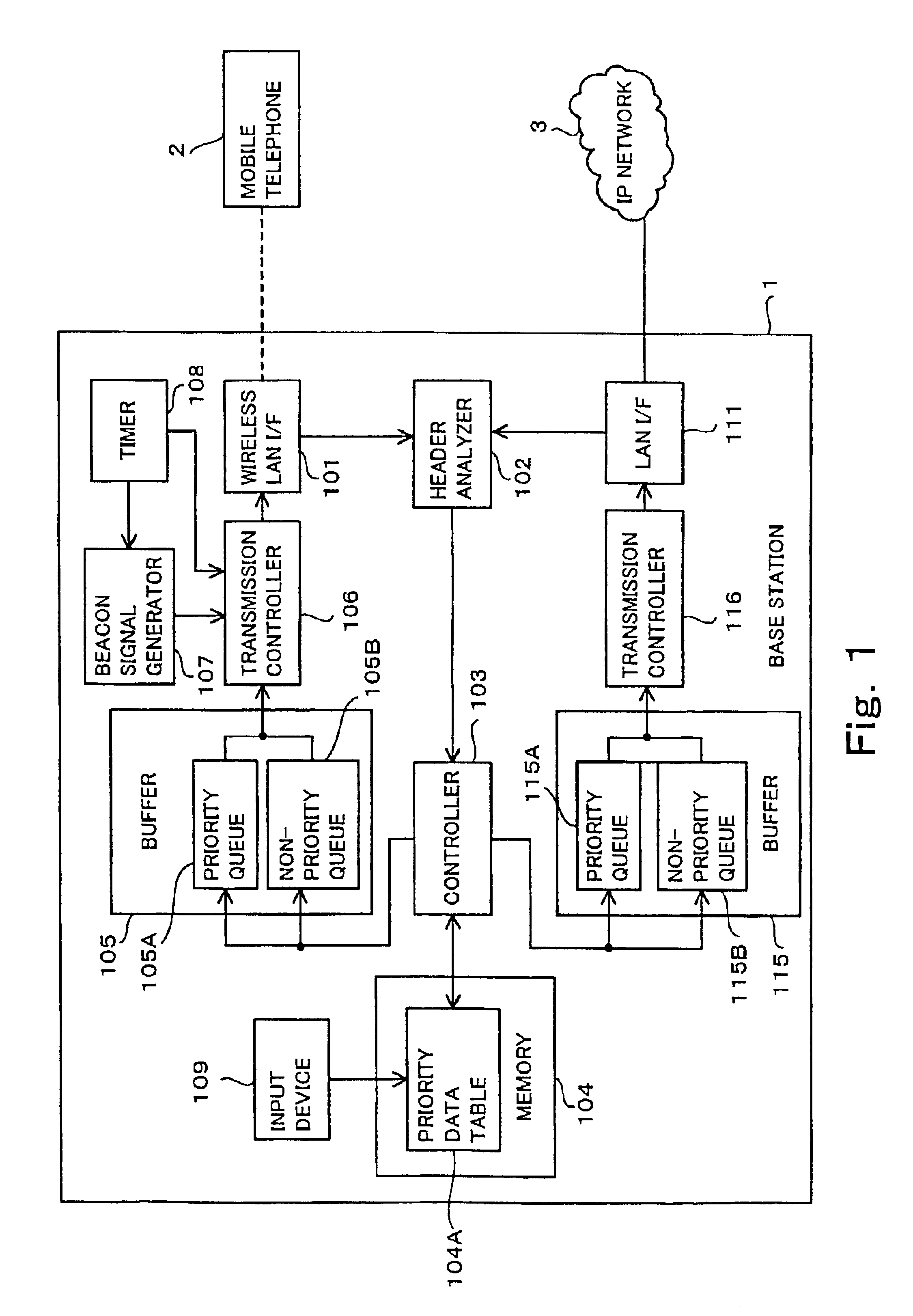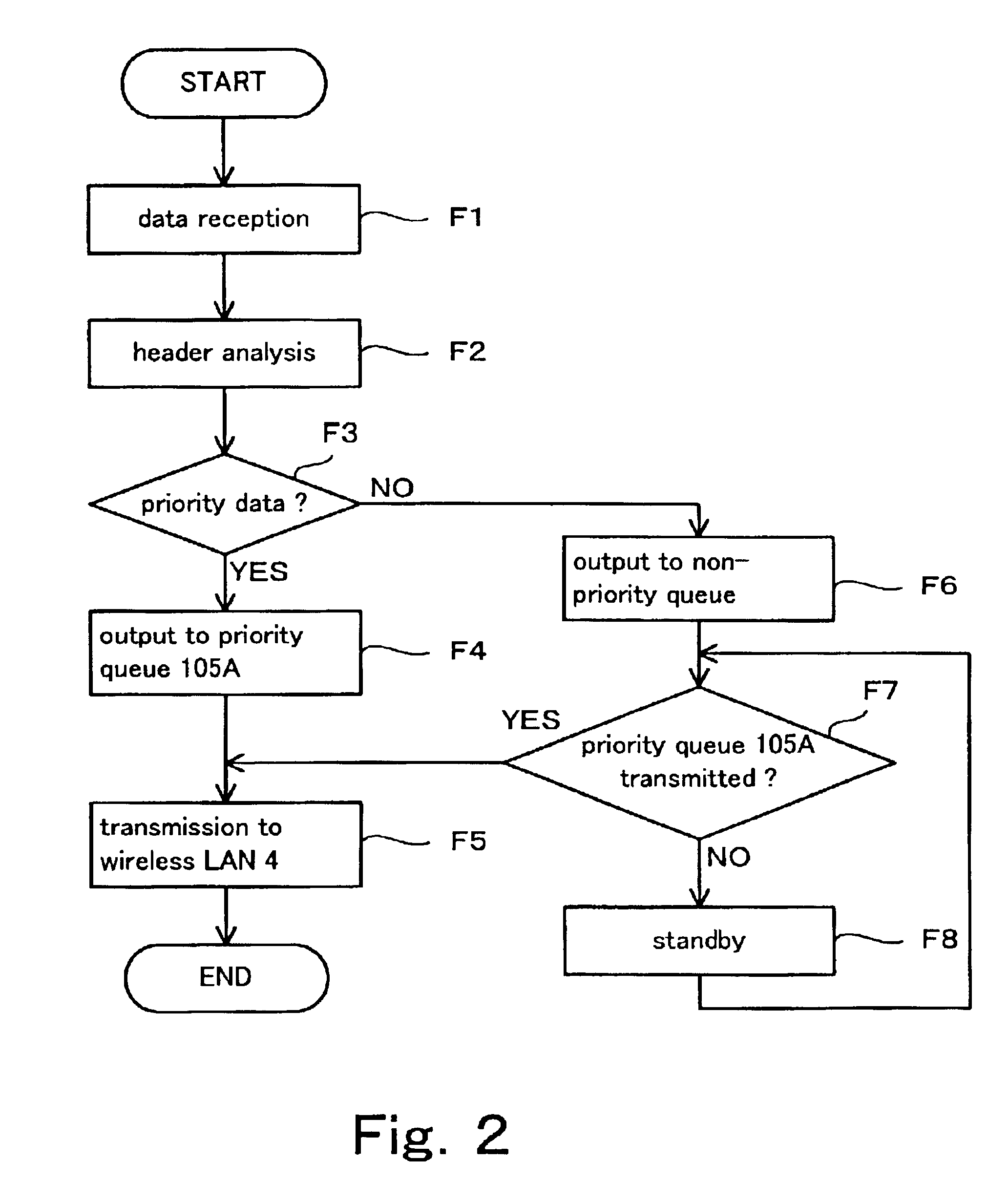Base station for a wireless local area network, wireless terminal and program thereof
a wireless local area network and wireless terminal technology, applied in the direction of data switching networks, synchronisation arrangements, assess restrictions, etc., can solve the problems of qos (quality of service) improvement of such wireless lan qos to be degraded
- Summary
- Abstract
- Description
- Claims
- Application Information
AI Technical Summary
Benefits of technology
Problems solved by technology
Method used
Image
Examples
first embodiment
[0065]FIG. 1 is a block diagram showing a construction of a base station according to the first embodiment of the present invention. In FIG. 1, a base station 1 includes a wireless LAN interface 101, a header analyzer 102, a controller 103, a memory 104, a buffer 105, a transmission controller 106, a beacon signal generator 107, a timer 108, an input device 109, a LAN interface 111, a buffer 115 and a transmission controller 116.
[0066]The wireless LAN interface 101 is an interface between the base station 1 and a mobile telephone 2 to perform a data exchange between them through a wireless LAN 4. The wireless LAN is a radio communication system exemplified by IEEE 802.11 and is not specified in the present invention.
[0067]The header analyzer 102 analyzes data received by the wireless LAN Interface 101 and outputs a result of analysis to the controller 103. In more detail, the header analyzer 102 analyzes an information contained in a header of the received data such as physical laye...
second embodiment
[0091]FIG. 4 is a block diagram showing a construction of a portion of a base station according to a second embodiment of the present invention. The base station shown in FIG. 4 includes, in lieu of the buffer 105 in the first embodiment, a buffer 305 having a plurality of priority queues 1051 to 105n, where n is an integer equal to or larger than 2. When the priority includes 2 or more orders, each of the priority queues 1051 to 105n buffers a priority data of every priority. By providing the priority queues 1051 to 105n in such manner, it is possible, even when a plurality of priority data are received simultaneously by the base station 1, to transmit these data to the respective mobile telephones at the constant interval T. Therefore, the radiotelephones can receive the message data at the constant interval T.
[0092]In this case, the transmission controller 106 transmits buffered data to the priority queues 1051 to 105n in time periods, which are prelimiarily set correspondingly t...
third embodiment
[0101]FIG. 5 is a block diagram showing a construction of a base station according to a third embodiment of the present invention. The base station 1A shown in FIG. 5 is featured by that a packet shredder (data size regulator means) 121 and a transmission time monitor 122 are added to the base station 1 shown in FIG. 1.
[0102]The packet shredder 121 functions to regulate the data outputted from the controller 103 to a predetermined size and to output the size regulated data to the priority queue 105A or the non-priority queue 105B. With this construction of the base station, it is possible, even when the data size is too large to transmit it within the time between adjacent beacon signals, to standardize the data size by using the packet shredder 121 to thereby transmit it within the time between adjacent beacon signals. Therefore, it is possible to transmit data at constant interval regardless of the original size thereof.
[0103]The transmission time monitor (transmission time regula...
PUM
 Login to View More
Login to View More Abstract
Description
Claims
Application Information
 Login to View More
Login to View More - R&D
- Intellectual Property
- Life Sciences
- Materials
- Tech Scout
- Unparalleled Data Quality
- Higher Quality Content
- 60% Fewer Hallucinations
Browse by: Latest US Patents, China's latest patents, Technical Efficacy Thesaurus, Application Domain, Technology Topic, Popular Technical Reports.
© 2025 PatSnap. All rights reserved.Legal|Privacy policy|Modern Slavery Act Transparency Statement|Sitemap|About US| Contact US: help@patsnap.com



